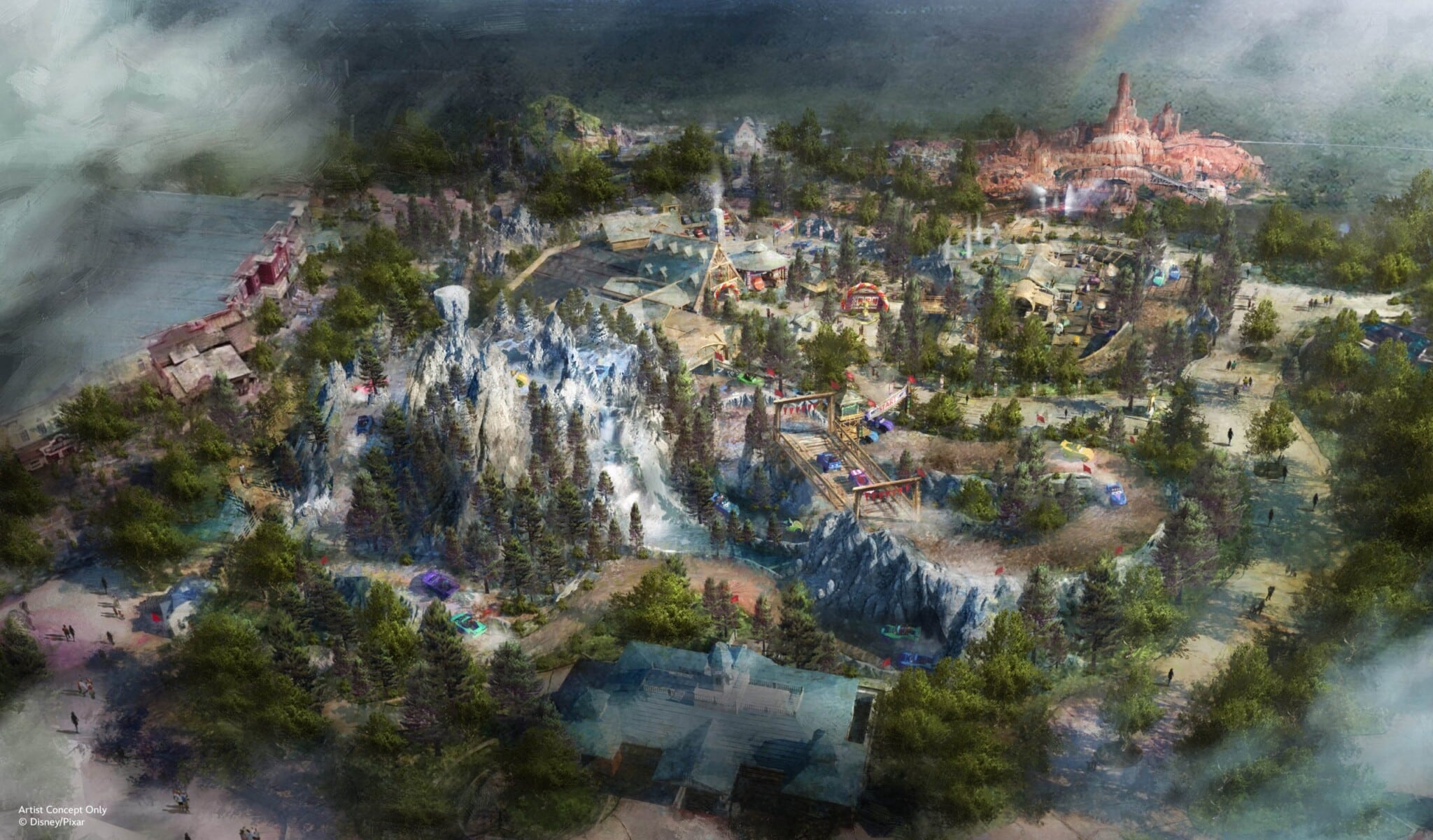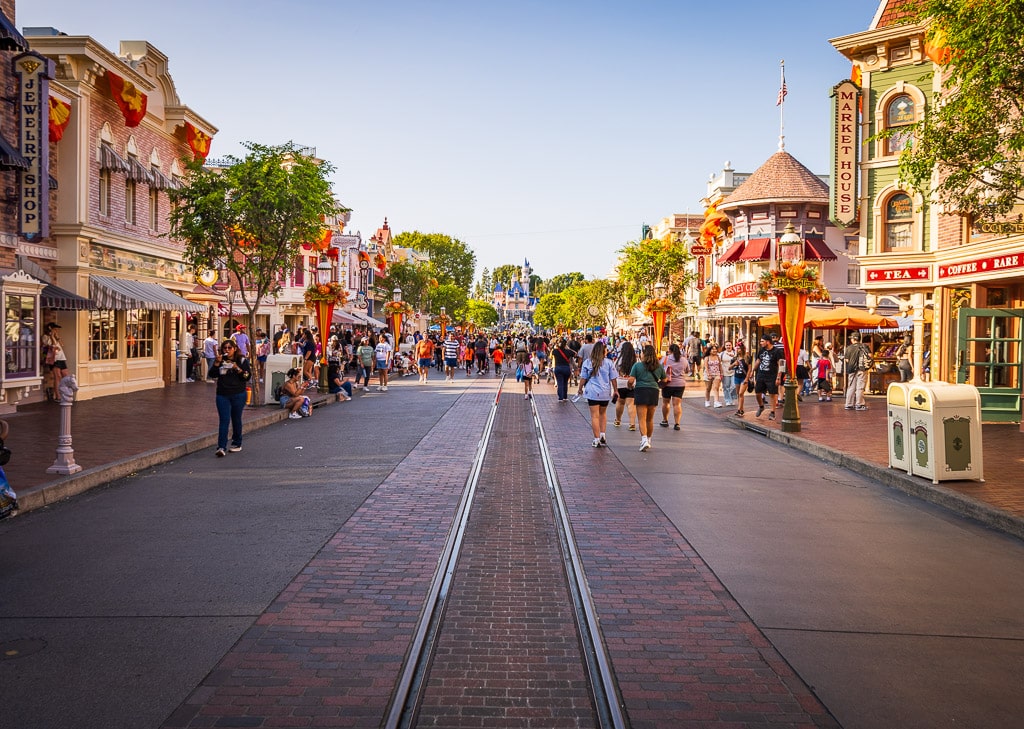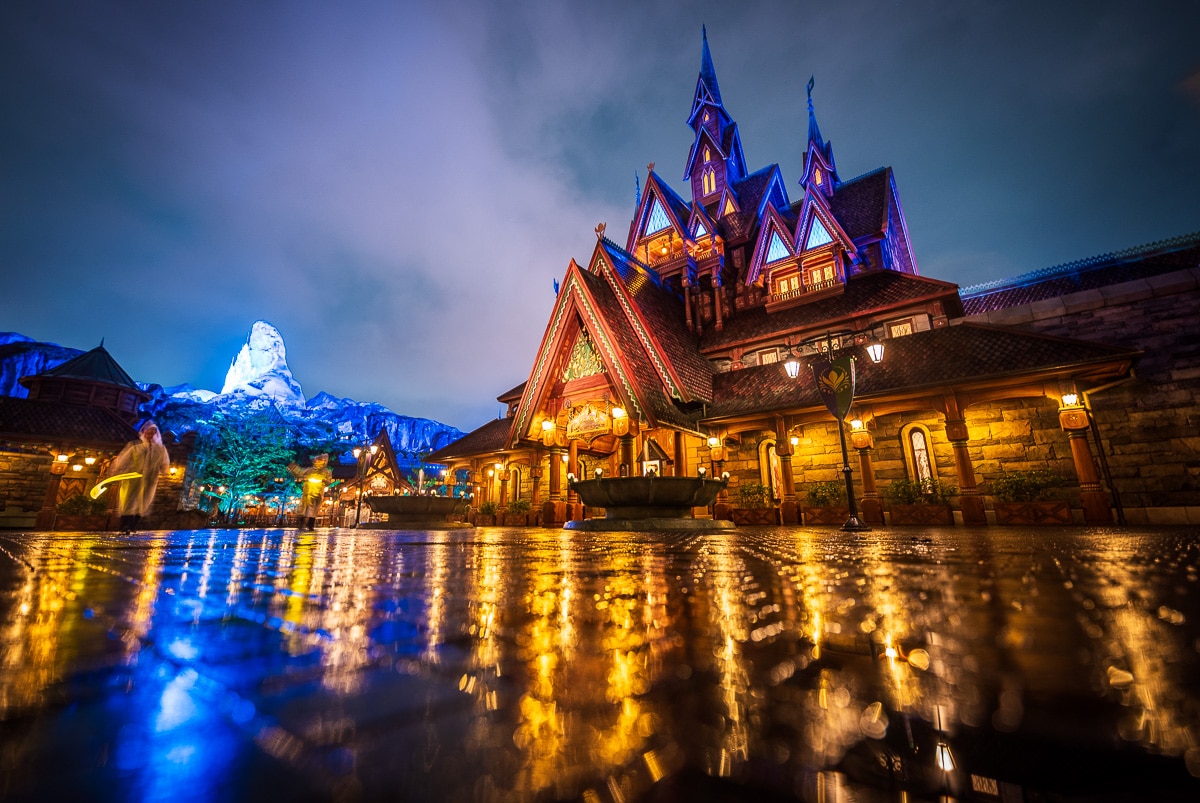
Looking for the best camera or lenses, tips for taking great photos or to improve your photography? This guide offers tutorials to take better photos in a variety of scenes at Walt Disney World, Disneyland, and beyond! (Updated July 17, 2024.)
These tips will help you take better photos of Disney fireworks, dark rides, Cinderella Castle, and much more that’s specific to the parks. However, the first thing you should do is learn the basics of photography. For this, I highly recommend a copy of UnderstandingExposure, which covers the technical side of photography. For understanding what makes for an aesthetically pleasing photo, read The Photographer’s Eye, which covers composition.
All of the expensive equipment in the world won’t help you if you haven’t learned the basics, and those two books are the best way to learn the basics and how to take photos that aren’t just snapshots. Books are how I taught myself photography and many others have done the same. Books are a lot cheaper than a new lens, and if you’re a beginner, those will improve your photography more than a new gear. You are better off with an iPhone plus skill and knowledge than a $10,000 camera and cluelessness.
Along those lines, realize that no camera “takes good pictures.” Some cameras can help an adept photographer more than others, but if the person taking the photos doesn’t do things right, photos taken with a fancy camera can look worse than photos taken with an iPhone. Likewise, many experienced photographers can take better photos with an iPhone than inexperienced photographers can with expensive DSLRs on Auto Mode.
This guide will primarily focus on providing you with resources for learning more about photography, so you can really take your photos to the next level. If you’re sitting around at home practicing social distancing or self-quarantining, the good news is that this is the perfect time to learn photography!
It’s surprisingly easy to improve your photography at home, alternating between reading books and practicing with subjects around your house or in your backyard (my #1 subject for testing out new photography techniques is our cat!). Knowledge is so much more important than equipment, and once you learn more about photography, you realize you don’t need to waste additional money on more equipment!
With that update out of the way, let’s continue with a few of my favorite photography books…
Disney Photography Tips
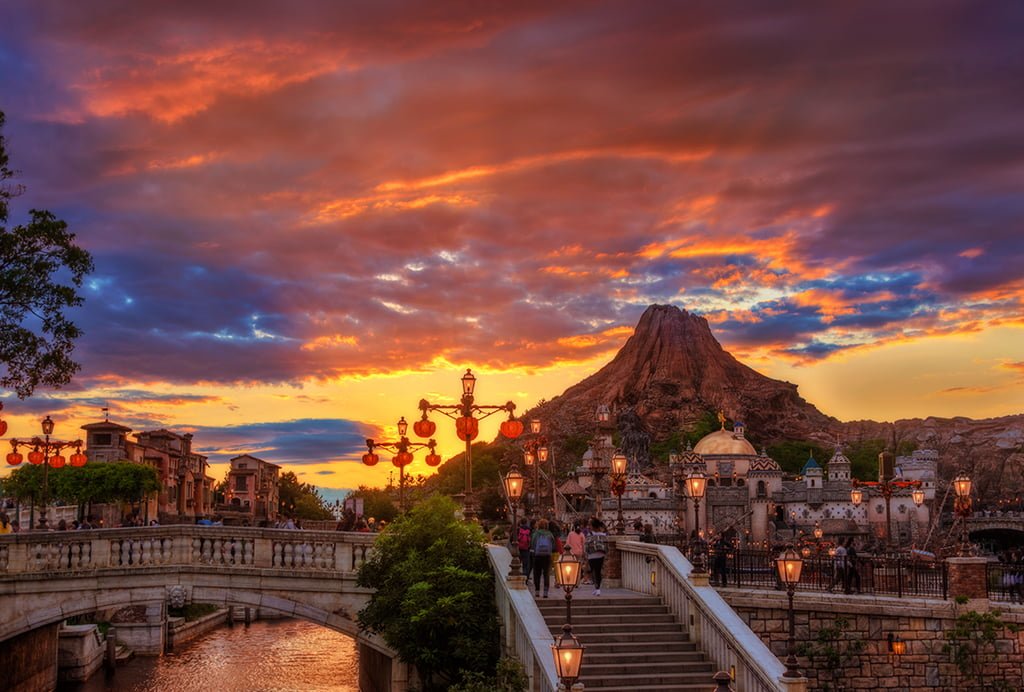
We’ve done a number of blog posts providing tips for improving your photography at Disney. I can’t stress enough that knowledge is the biggest component of taking good photos at Walt Disney World (and beyond!) so you should really read some of the tutorials I’ve written. They have helped a lot of people.
You should read these after you read Understanding Exposure. These guides all assume you have a decent foundation to understand the basics of photography, and you might be confused by these if you don’t know the basics:
- Disney Dark Ride Photography Guide
- How to Photograph Fireworks
- How to Take Great Photos with Your Point & Shoot Camera
- Top 10 Lenses for Disney Parks Photography
- 5 Indispensable Tips for Disney Photography
- Unique Family Photo Ideas at Disney
- Top 10 Tips for Night Photography at Disney
- Tips for Improving Your Photo Composition at Disney
- Tips for HDR Disney Photography
- Best Magic Kingdom Fireworks Spots
- Best Disneyland Fireworks Spots
- Tips for Using Prime Lenses at Disney
- Tips for Using Telephoto Lenses at Disney
- Main Street Electrical Parade Photography Tips
- World of Color Photography Tips
- Fantasmic Photography Tips
- Christmas Photography Tips
- Top 10 Cinderella Castle Photo Spots
- Top 10 Sleeping Beauty Castle Photo Spots
- Neutral Density Filters for Fireworks Photography
This just scratches the surface on the photography guides we’ve written. To read and learn more, browse the photography category of posts on the blog. Once you’ve learned a bit, it might be time to buy some new equipment to help you take better photos. Read on for our buying suggestions…
Cameras
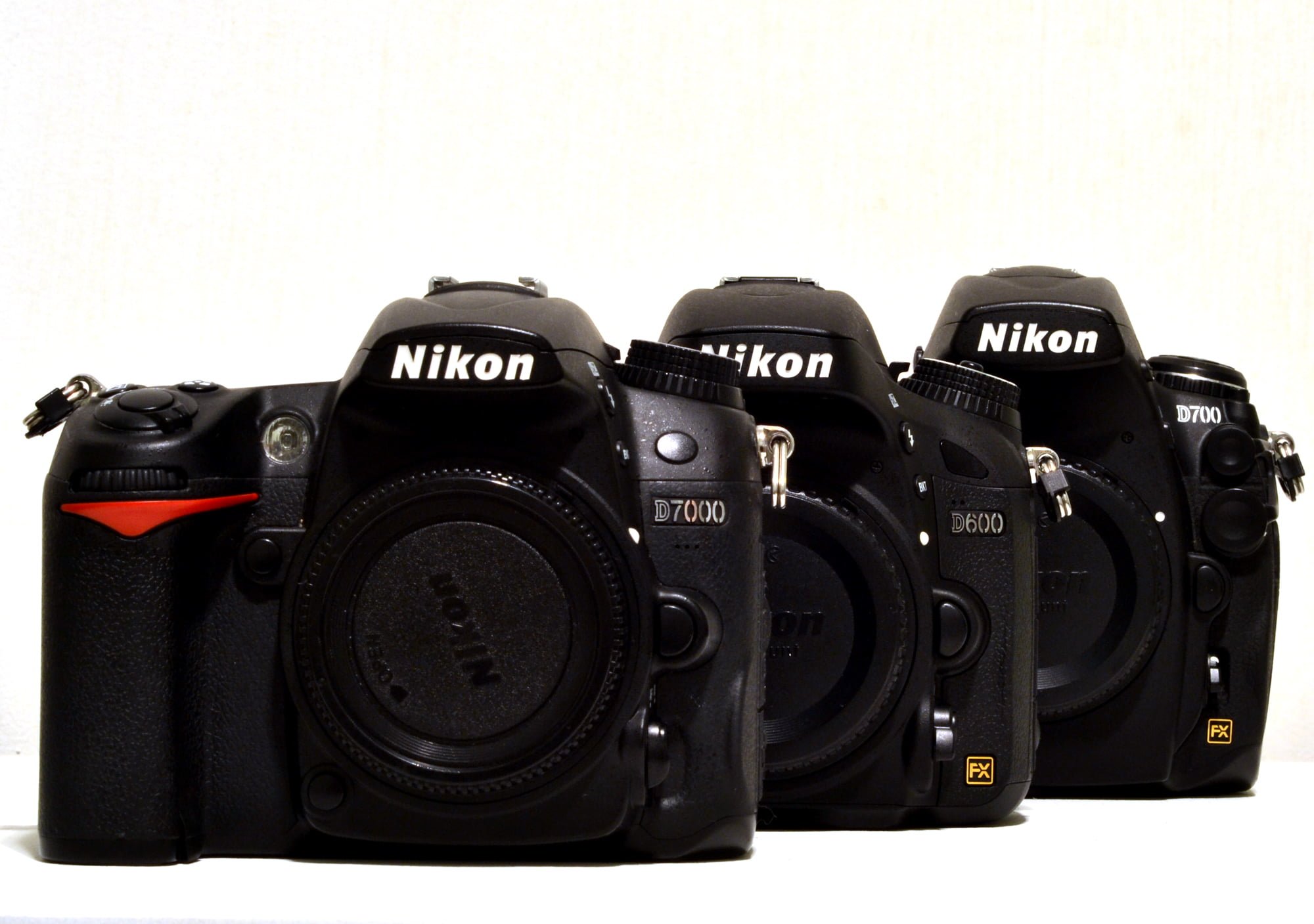
The first thing you need to do is determine which type of camera is right for you. Over the past decade, I’ve tested 20+ cameras and talked with hundreds of beginners who wondered which camera to buy. From that, I’ve learned that the “right” camera for a beginner is almost entirely a matter of personal preference and goals.
For the vast majority of people, modern camera phones are more than capable. Newer models of the iPhone, Samsung Galaxy, Google Pixel–and probably other phones with which I’m unfamiliar–are all fantastic. If you’re simply sharing on social media and don’t have demanding conditions, specific use cases, or need the highest quality, camera phones are probably good enough. They are the right answer for 90% of people, which is a big reason why the camera market is shrinking. I even regularly forgo taking my big camera bag and just use my phone!
Let’s assume that, for whatever reason, you want a dedicated camera. When thinking about which type to buy, you have to think about your intent. Are you primarily interested in capturing quality photos of your family’s memorable moments on vacation? Consider a nice point & shoot. Concerned about camera size and weight? Go point & shoot. Want an starter camera that will make learning easier? Again, think point & shoot.
We think the Sony RX100 is the best point & shoot camera line on the market. I’ve used multiple different versions of this camera since it launched over a decade ago, and have been wowed by all of them. Unfortunately, Sony hasn’t updated this line in a few years and the RX100 VII is still really expensive despite that. You might be able to pick up a used or older model cheaper–and I’d recommend considering that. Mine is still going strong 5 years later.
Another alternative would be opting for the Sony ZV-1, which is a newer camera that costs less than half the price of the Rx100 VII. It’s marketed at vloggers, meaning that it’s also very capable of video. As someone who exclusively does photography, this isn’t a selling point for me. But it’s fairly undeniable that the Sony ZV-1 offers better bang for buck, and is a nice upgrade from iPhone quality photos and videos.
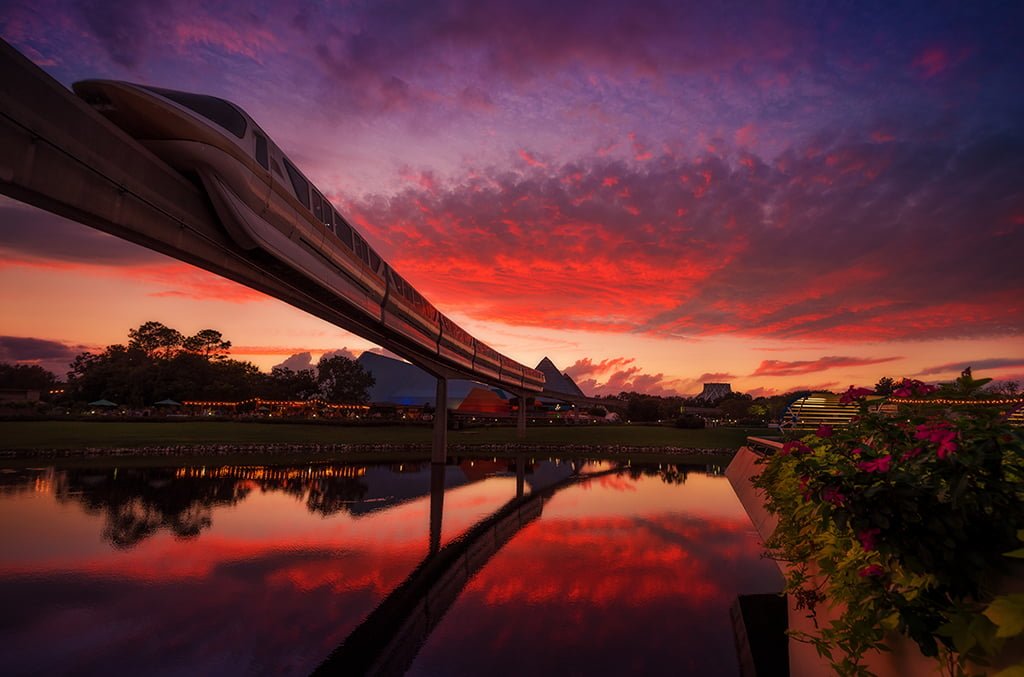
Everything above that is either going to be a DSLR (if you’re old school) or a mirrorless camera. My two main cameras now are the Nikon Z7 II full frame mirrorless camera and Nikon D850 DSLR. Both of these are pro grade cameras that offer unparalleled performance. They’re not cheap, and are only recommended for those who are truly serious about photography and have unmet needs by lower-tier cameras. I would not recommend anyone learning photography purchase either of these.
Honestly, I’m not sure which entry-level “big” cameras I would recommend at this point. My camera testing and reviewing days are behind me, and I’ve been so satisfied with the Nikon D850 and then the Nikon Z7 II that I haven’t bounced around trying other cameras in the last ~5 years. Consequently, I’ve become a bit out of touch with entry level models and what Canon, Nikon, Sony, and other brands are doing to innovate.
If you want look at the equipment I currently carry, check out What’s In My Camera Bag for 2024. That’s going to be the best resource if you’re interested in going with a full frame Nikon mirrorless camera and are wondering which lenses to purchase.
Ultimately, which of these cameras you buy depends upon how serious you are about photography. If you’re just getting started, no matter how excited you are about photography, it’s probably smart to not buy anything above an entry level model, no matter how large your budget.
Guide Conclusion
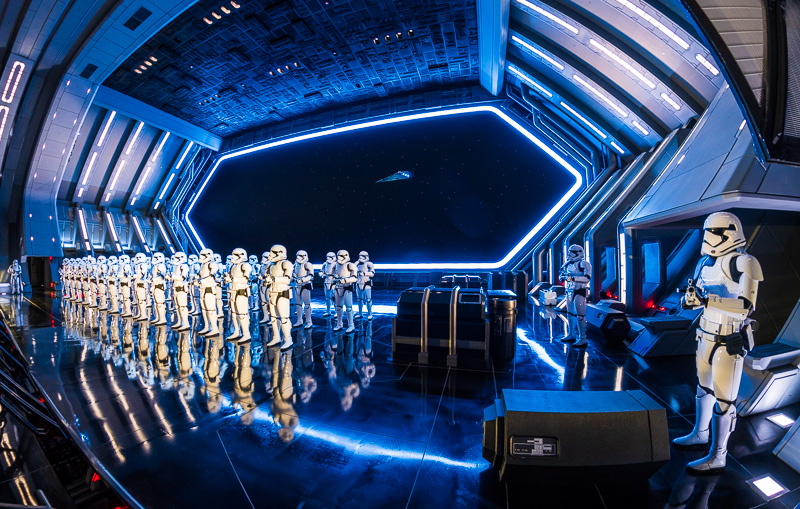
As mentioned above, the vast majority of people just getting started in photography are probably best suited by a high-end point and shoot camera, with my absolute top pick being the Sony RX100. This is a great way to get a taste of serious photography with customizable settings and excellent image quality, but in a compact package. Most people won’t outgrow that camera, but if you do, then look at DSLRs or mirrorless cameras.
If you’ve already decided that a DSLR camera is your best option, you’ll want to think about everything you need to go along with it to really take your photography to the next level. If you’re on a limited budget, start out by making 3 upgrades: 1) tripod, 2) wide angle lens, 3) prime portrait lens or mid-range zoom lens. I’d say these are the 3 best purchases a new photographer of the Disney Parks can make to improve their game.
However, if you really want to take your photography to the next level, gear is not what you need–at least not exclusively. What you need is knowledge. You will never take amazing photos in auto mode. You need to start by getting a copy of Understanding Exposure to learn the fundamentals, and then read more advance books, tutorials, and practice like crazy. Anyone can become great at photography, but you can’t get there just by purchasing fancy toys. 🙂
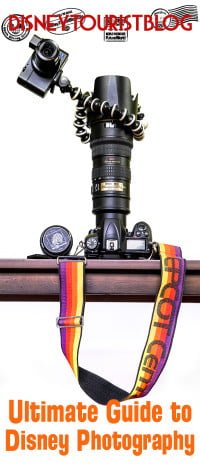
Finally, a word of warning. Don’t take shortcuts when buying photography equipment. Yes, it’s expensive, but I’ve discovered first-hand that buying photo gear on eBay or Craigslist is a huge risk. You don’t know how the seller took care of their gear, if it’s grey market (meaning US manufacturers won’t service it if there’s a problem), or what problems may come up down the road. You also don’t save that much over buying new. Finally, you don’t get a warranty. Things do go wrong with cameras, seemingly inexplicably, and it would really stink for that $1,000 investment to break with no recourse for you.
We’re Amazon Prime members, so we almost always order from Amazon.com. I also recommend Adorama.com
, B&H Photo, or Abes of Maine, but I generally avoid all other online photo retailers (I STRONGLY recommend avoiding J&R Cameras due to two negative experiences I’ve had with them). By the way, if you are considering a purchase of any photography equipment, lenses, or anything else for that matter we would greatly appreciate it if you use the links in this post to make your purchase. It benefits the site, doesn’t cost you a dime, and helps us to keep providing you with useful(?) content!
Your Thoughts
What have you found helped improve your photography? Have other photography tips of your own to add? Other gear recommendations? If you have questions, please leave them in the comments below and I’ll try my best to help!




